|
I recently rediscovered the work of Maria Lassnig, an amazing abstract/figurative painter from Vienna who passed away at the age of 94 in 2014. Ahead of her time, Lassnig is best known for her Body Awareness paintings in which she painted how her body was feeling from the inside as opposed to how it appeared from the outside.
Reading the writings in Lassnig’s diaries has been a profound intellectual and artistic experience for me. Her paintings, most of which are self-portraits, delve deeply into the human psyche and the collective unconscious through shape, subtle color, and symbolism. Her writings and paintings seem to speak directly to me, providing me with the female artistic mentor that I lacked as a child and young woman. Particularly powerful for me have been her following thoughts. “… One must be hungry, have inhibitions, be able to forget all images…The rhythm of painting should be like gasps of breath when life chokes us. The pure gesture will ultimately produce focal points, points of concentration. You can also begin with them, lose them and relocate them… Oh, the artists who are captives of their own style, grumpily looking out at the world, doggedly longing for the fruitful path of superlative success; discard style, alter it every week, revise your norms each week change the color of your hair, your wig, every day, change your vocabulary, your preconceived opinion about your neighbor and about politics every day, your way of life every week, change your job, anticipate the changes that time has in store for us… When, in my painting, I became tired of analytically depicting nature, I search for reality that was more fully in my possession than the exterior world, and I found it waiting for me in the body house in which I dwell, the realist and clearest reality, I only needed to become aware of it in order to be able to project its imprints as fixed focal points onto the picture plane.” (Maria Lassnig: Works, Diaries & Writings, by Fundacio Antoni Tapies, 2005) Lassnig has inspired me to paint paintings that are my own. They emerge from a place inside of me that I did not know I had. I am plumbing the depths of my experience and connecting to a larger whole through paint, brush, fingers, surface. I am using the formal devices of art - composition, shape, color, and line - to develop a visual language that feels uniquely mine. Lassnig has also given me the courage to use abstraction, figuratively. I have no interest in recording the reality that we see with our eyes because cameras can do that. Instead, I paint paintings that live their own reality.
2 Comments
I have recently been studying contemporary art history with David Cohen at the Yellow Chair Workshop in Brooklyn. An assignment for the course was to pretend we were a museum curator. We had to position ourselves in the canon of contemporary art using a work by a well known artist from the 60's, another from the past ten years, and a current piece of our own. Here is what I wrote - sort of tongue-in-cheek. It was a great, fun activity to complete!
"It is with great pleasure that the Yellow Chair Museum welcomes you to the breakthrough exhibit, “Out of a Nutt Grow Two Mighty Babes”. The work of Jim Nutt (b. 1938, Pittsfield, MA), Sarah Lucas (b. 1962, London, UK), and Diane Hulse (b. 1949, Chicago, IL) has not been shown together before this exhibition. Jim Nutt is still an actively producing artist, but his most renowned work was painted in the 1960’s when he was a member of the “Hairy Who?” in Chicago. Nutt’s work from this era is distorted portraits and figure groupings that are loaded with symbols, vulgarities, and sexual innuendos. Featured here on these walls is Nutt’s reverse acrylic painting on Plexiglas, “Rosy Comon,” created in 1967-68. Sarah Lucas is also a currently practicing artist. She came to fame as a sculptor in the early 1990’s as a member of the Young British Artists (YBA) group that also included luminaries such as Damien Hirst. Lucas and the other YBAs were known for the shock value of their art. Lucas’s “Honey Pie” was created in 2020. It is made of non-traditional materials such as stuffed pantyhose and tights. “Honey Pie” is a natural outgrowth of Lucas’s 1990’s Bunny series and is showcased here. Born between Nutt and Lucas (no pun intended) and influenced by both, Diane Hulse is a mixed media, abstract artist who has recently retired to devote her full time to the creation of her art work. Her paintings make emotional connections to the abuse of women. Hulse’s 24” x 24” acrylic painting on Styrofoam was created in 2021 and is entitled “Dick’s Face.” Many connections are evident among the three works in “Out of a Nutt Grow Two Mighty Babes.” It is unclear whether Lucas and Nutt are aware of each other’s work, but Hulse certainly traces her roots to both of them. All three pieces show similarities of palette, line and shape characteristics, symbolism, materials, intention, and narrative. All three are intended to shock while mitigating the shock factor with the humor of absurdity and subtle puns in the titles. The bright, flat colors appear to be color-coordinated with the palettes of each other, almost as if a decorator had chosen the three pieces to complement the furniture of a trendy New York apartment. The colors call for attention, and they vibrate. There is nothing soft or subtle about any of the vivid, clear hues, and the loud colors emphasize the shocking imagery. Organic and flowing lines and shapes hug the colors, echoing body part shapes and functions. Through color, line, and shape, the narrative and its associations dominate the imagery, weaving together a coherent whole. Questions are begged by what is said and what is left out of the works. What is dripping out of Rosy’s nose? What is that white hand to the lower left doing on Hulse’s piece? What happened to Honey Pie’s John? Materials are non-traditional – Styrofoam, pantyhose, Plexiglas – lending support to themes of the common and the vulgar. There are no stately oil on canvas images here. Perhaps the stories are dreams or even nightmares. Honey Pie, Dick’s Face, and Rosy Comon are dripping with adolescent humor. Sex, guts, gore, breasts, penises, and fetishes abound. All three works in “Out of a Nutt Grow Two Mighty Babes” are also countercultural. The “Academy” during Nutt’s heyday was led by the minimalists and conceptual artists of the 60’s. Nutt was considered an outsider, even though he was well-schooled in “Academy” learning from the School of the Art Institute of Chicago. Lucas was the “bad girl” of the YBAs and was an outsider because of her gender and working class roots. She partied and made art harder than all of the blokes, even contending that she “out-bloked the blokes.” Hulse is a senior citizen who is “supposed” to have learned proper behavior 50 years ago. Even though they are somewhat shocking, all three pieces also have charm, which is an enormous feat for artists who challenge the mainstream, as Nutt, Lucas and Hulse continue to do." After completing the breakthrough piece that I described in my last post, my art has included much more narrative than in the past. Stories are emerging in my paintings. The act of painting has provided a key for me to unlock and personalize universal themes that for millennia have been passed on from one generation to another as fairy tales and myths.
My recent paintings have focused on Beauty and the Beast. The Beast is an abuser, a charlatan, a snake oil salesman, a Minotaur, the devil, a pretender, and a creature devoid of feeling and empathy. Beauty is naïve, seductive, wily, the victim, the traumatized, the denier, yet also the one who can be in charge, manipulating the Beast behind-the-scenes. Sometimes, the images are grotesque. There are monsters in the paintings. There is destruction, blood, and guts. Other times, there is whimsy and humor as Beauty disdainfully dismisses, disregards, or castrates the Beast metaphorically. The strength of Beauty astonishes. The painting above is titled, simply, “The Beast”. It is painted on 24” x 24” high density polyethylene with acrylics. This painting is the first in the series. Please let me know what kind of impact this image has on you. My best artwork comes from a place inside of me that is full of spontaneity. That place is neither too intellectual nor overly emotional. It is a place where I am fully in the moment, able to see possibility and to respond with joy to what my senses are perceiving. Such is the case with the work pictured here.
This is a breakthrough piece, and it has led to a deep wellspring of artistic inspiration. I didn’t plan that this piece would be so important to me. In fact, it was accidental. I had been working for several weeks with unusual materials, including Styrofoam and pantyhose. I wanted to make my work large but light in weight. I had been carving Styrofoam, stuffing pantyhose with pillow stuffing, manipulating papier-mâché, and testing light weight sculptural materials As part of that exploration, I had crafted the forms in the piece above and arranged them on a very large sheet of Styrofoam. I had spent several days re-configuring the elements and trying to find both imagery and composition that were pleasing to me. Thematically, I had been exploring the dark side of power and trying to comprehend the impact of generational violence on women. I had made gruesome Raggedy Ann dolls from pantyhose and grotesque clown figures from colored tights. As I worked, I had many associations with pantyhose, as most women do. Pantyhose are uncomfortable. They are confining. They make women bulge out in unattractive places. The wearing of pantyhose emerges from a set of cultural expectations that have restricted and defined women for decades. Stuffing pantyhose was enjoyable because it allowed me to be somewhat counter-cultural. I could make figures that were wild and unruly. Lots of emotions started to bubble to the surface. The stuffed pantyhose readily became body parts. It easily formed facial expressions and inner organs. The material was fragile yet very fluid. My hands enjoyed the texture and flexibility. The precursor to the work pictured above was the sixth or seventh piece that I had created from pantyhose. However, I didn’t like the final state of the precursor piece, and I disassembled it, intending to discard the elements. When I held the soft, stuffed forms, I couldn’t quite bring myself to toss them into the trash, however. They were so interesting and squeezable. Spontaneously, I decided to keep the forms for possible use later, and I started to weave them in and out of the grid on the wall of my studio because I couldn’t figure out where else to store them. Quickly, I realized that I had invented a unique process. I could actually push the stuffed pantyhose through the metal grid and create evocative imagery. When I arrived at what felt like a complete statement, I grabbed a frame and hung it on the grid to surround the stuffed forms. Shortly thereafter, the piece took on a life of its own in my imagination. Humor and possibility began to replace the darkness of the gruesome and grotesque figures I had been creating. It seemed like creative floodgates opened in the right side of my brain as I acquired mastery of the new imagery. I realized that I did not need to be literal; I could be visually figurative. This was a breakthrough piece because it enabled me to develop a visual language that was in my voice. In fact, the breakthrough piece helped me find a voice that I did not know that I had. Ironically, unless the steel grid is sawed off, the piece can never be moved. It is woven permanently in place, a fitting metaphor for an epiphany.
After living for 50 years in New York City, we moved at the end of January, 2020, into a Quaker retirement community in southeastern Pennsylvania. A lifelong association with Quaker schools had prompted us to seek a progressive community that was based on values of engagement, equality, generosity, lifelong learning, wellness, integrity, and environmental stewardship. At Kendal-Crosslands, we have found all that and more, including the rich artistic community that exists throughout the Brandywine Valley. We are so pleased with our new community that we even moved my 96 year old mother from Cape Cod into the assisted living section on our campus.
Our 500 acres serve as endless inspiration. We have streams, open meadows, wooded hills, and many species of wildlife. We regularly see fox, deer, hawks, flickers, bluebirds, turkey vultures, and woodpeckers. We feast daily on a buffet of natural resources. Because my academic background is both biology and the fine arts, my life has two deep roots: science and art. We live in a paradise of possibility for exploring both passions. We had just begun to acquaint ourselves with our new community when Covid-19 impacted the world. Our campus went into lock down, and our horizons became very limited. My studio quickly became a sanctuary. Soon after the lock down, however, my husband became very ill (He is okay now!), and our life was severely restricted for six months. During that dark time, I could not be in my studio, and there was no room to paint in our new apartment. I knew I should not stop working on my art, so I returned to a childhood activity that had sustained me when I had been ill as a child. My mother taught me how to use a sewing machine, and it has been a skill that I have used many times since. I set up my sewing machine on our kitchen table, and I started to sew my paintings. I made a series of collages that I stitched together. No glue. No paint. Just thread, paper, and stitches. From my studio stash, I foraged scraps of paper that I had saved for their beauty. I also cut up my old paintings and journal entries. All of the fragments were mended into a new whole. I felt a deep connection to the process. The sound of the sewing machine was soothing, and its repetitive motion was meditative. Many associations arose to other parts of my life. Threads connected me to my childhood and to women through the ages. Stitching is women’s work. Women have always mended. They mend hurt feelings, torn clothing, scraped knees, relationships. Stitches are used to close wounds and to reclaim and reassemble fragments. I could feel the mending process working inside of me. Through the work, I began to heal. As with all honest art, I was able to express my fears, frustrations, and confusion in the pieces I was creating. I found myself empathizing with women throughout history who have needed to remain steadfast during difficult times. I also reconnected to additional roots in my life - feminism and perseverance. I continue to grow and learn. I have always loved to write. I have also always loved to make art. Therefore, I am embarking on a new journey. I’m going to write about my art making. I have no idea where I will end up. I haven’t chosen a destination or even a road on which to travel. It just feels right to get going. In terms of the frequency of my blogging, I promise that I will post periodically. As I get the feel of the thing, I may post according to a specific schedule. Right now, I have so much artistically on my mind that I'm sure my posts will be frequent.
Although 12/26/20 is the formal start of my blog, I took my first baby steps on this project in the fall of 2019. I had just found a beautiful new studio 10 minutes away from where we would be relocating. It seemed appropriate to inaugurate my practice in the new studio with daily art writing. For several months after signing my lease, I did a free-write for 15 minutes every time I entered the studio. It helped me focus, cleared my head, and gave me a record of my thinking. However, I found it frustrating that I had to carry the journal with me in order to have access to it when and wherever I wanted. I abandoned the notebook and began looking for a better vehicle to combine art and writing. Switching to an electronic, online blog platform seemed very appealing. A blog is portable and it allows one to include photos. Fortunately, my art website could be upgraded to include a blog. My web designer set it up, and this is my first piece of blog writing. As I write and make art, I hope to engage readers in a dialogue about my art and art in general. I look forward to taking the journey with you. 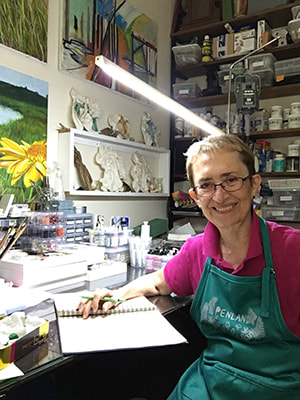 Welcome! With the approaching close of this challenging year, I welcome this new beginning as an opportunity to share some of my thoughts and creative processes with you. I work intuitively, utilizing whatever will help me realize my vision — paint, wood, ink, paper, precious stones and metals, resin, and found objects. I consciously rescue what I include — what others might call detritus. I repurpose my discarded paintings and drawings as readily as the eroded sea shells that I have foraged, paper scraps I have carefully collected, frayed pieces of fabric, and snippets of my memories. I give new life to these treasures by highlighting the beauty I perceive in their insignificance. The act of rescue becomes my embrace of Earth and all that is fragile. Let’s welcome new beginnings together! |
Diane HulseI am an abstract, mixed media artist with a background in biology as well as the fine arts. I use my art to investigate the outer landscapes of our embattled Earth, and the inner landscape of self. Archives
March 2021
Categories |
Proudly powered by Weebly

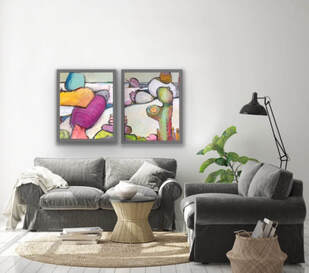
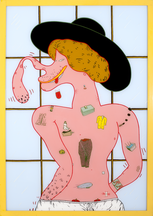
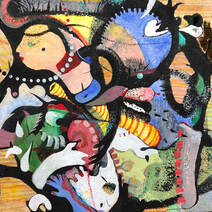
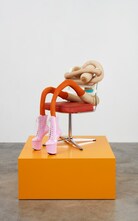
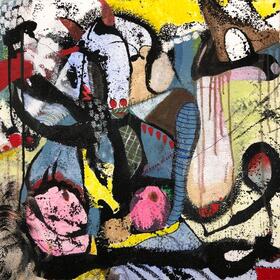
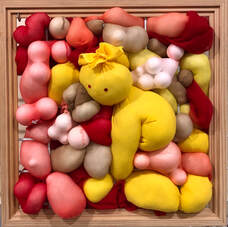
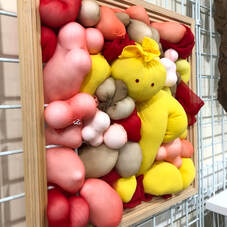
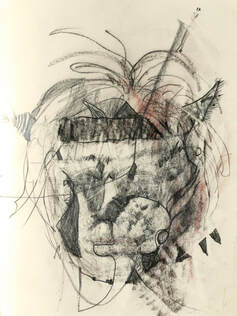
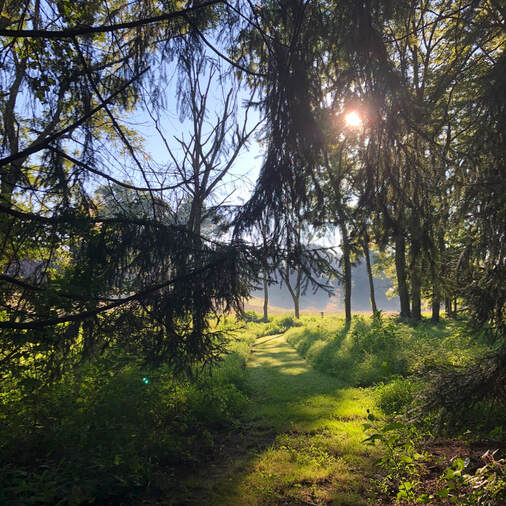
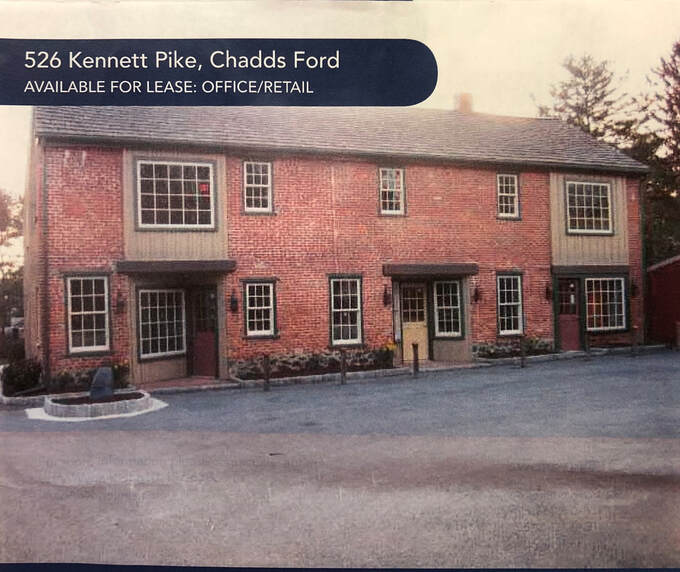
 RSS Feed
RSS Feed